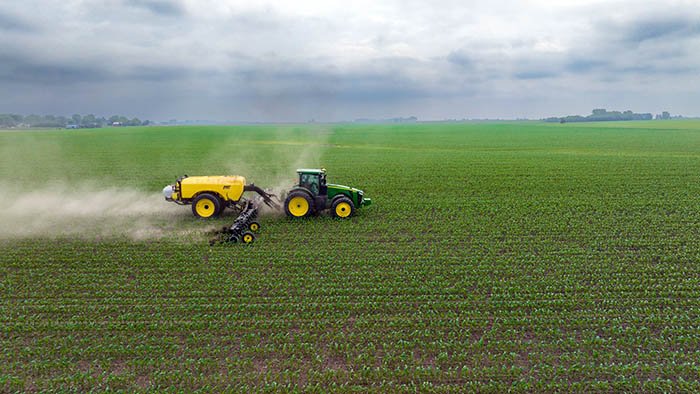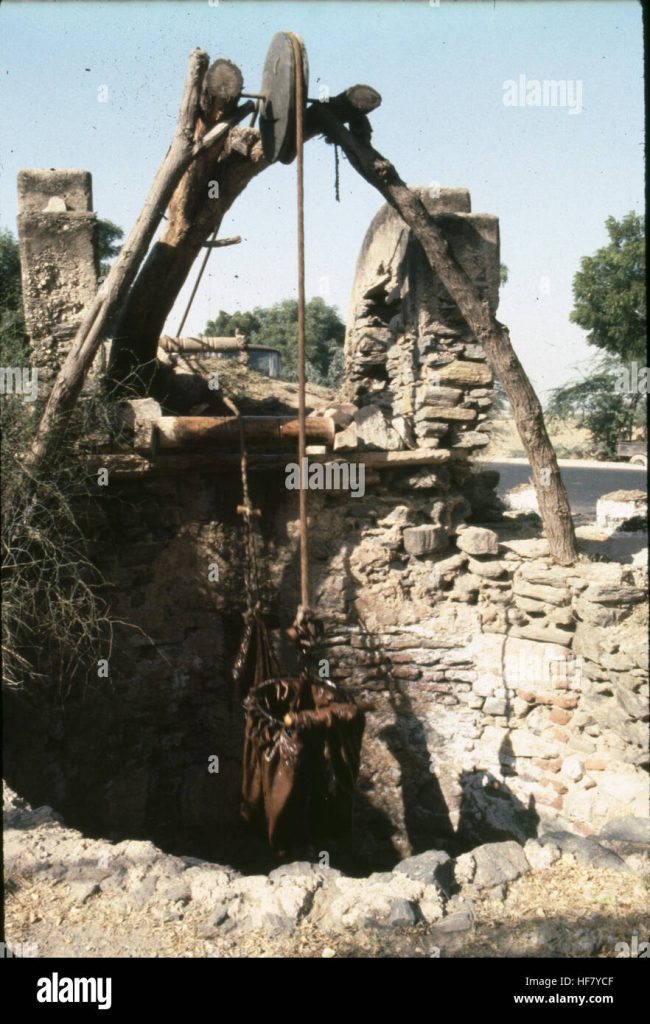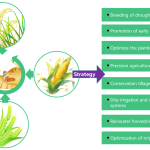Imagine walking through lush, green fields that have thrived for centuries using the same water techniques passed down through generations. These traditional irrigation methods are not just remnants of the past; they are vital practices still in use today.
What if you could discover the secrets behind these age-old techniques that continue to sustain communities and ecosystems around the world? You’ll learn about the remarkable persistence of these methods and how they might surprise you with their efficiency and sustainability.
As you delve deeper, you’ll find out why these techniques endure, and perhaps, you’ll even see how they could inspire modern farming practices. Ready to explore how the wisdom of the past is shaping the future? Let’s dive in.
Ancient Canal Systems
Ancient canal systems showcase traditional irrigation techniques still in use today. These canals efficiently distribute water to arid lands. Farmers rely on these methods for sustainable crop production. Despite modern advancements, these techniques remain crucial for agriculture worldwide.
Ancient canal systems have stood the test of time, demonstrating ingenious methods of water management that continue to be relevant today. These systems, developed by civilizations such as the Mesopotamians and Egyptians, showcase how our ancestors skillfully harnessed natural resources to support agriculture and sustain life. Despite advancements in technology, these time-honored techniques offer valuable lessons that can benefit modern irrigation practices.Understanding Ancient Canal Systems
Canals were strategically dug to channel water from rivers to farmlands. They transformed dry landscapes into fertile grounds, enabling crops to thrive. By observing these ancient methods, you can gain insights into efficient water usage, even in arid regions.Benefits Of Ancient Canal Systems
Ancient canals were designed with simplicity and effectiveness in mind. They minimized water loss and ensured consistent flow. This approach can inspire you to adopt sustainable practices that maximize resource use without heavy reliance on modern technology.Examples Of Ancient Canal Systems
The Qanat system in Persia used underground tunnels to transport water over long distances. Similarly, the Grand Canal in China facilitated agricultural prosperity by connecting major waterways. These examples illustrate how simple engineering can lead to remarkable achievements.Lessons For Modern Irrigation
Ancient canal systems teach us about resilience and adaptation. They remind us that sustainable practices are not just a modern trend, but a necessity rooted in history. Could integrating these ancient methods make your irrigation systems more efficient today?Your Role In Reviving Ancient Techniques
Consider how you can incorporate elements from these systems into your gardening or farming practices. Whether it’s by using gravity for water distribution or creating small channels for your crops, the principles of ancient canal systems offer practical solutions. By exploring these techniques, you not only honor the wisdom of our ancestors but also contribute to a more sustainable future. So, how will you apply these ancient insights to your modern challenges?
Terrace Farming Techniques
Terrace farming uses ancient irrigation methods like channeling rainwater to maintain soil moisture. These techniques help conserve water and prevent soil erosion. Farmers adapt these methods to suit their landscapes, ensuring sustainable agriculture practices that have lasted for generations.
Terrace farming techniques have been a cornerstone of sustainable agriculture for centuries. These methods are still in use today, particularly in hilly or mountainous regions where flat land is scarce. By creating stepped levels on the slopes, farmers can maximize arable land and prevent soil erosion. ###What Is Terrace Farming?
Terrace farming involves constructing a series of platforms or terraces on a hillside. This technique allows farmers to cultivate crops on steep terrain. It reduces water runoff and soil erosion, making it an effective way to manage challenging landscapes. ###The Benefits Of Terrace Farming
Terrace farming can increase land efficiency. By creating flat surfaces, farmers can grow crops in areas otherwise unsuitable for agriculture. This technique also conserves water by allowing it to soak into the terraces rather than running off the slope. ###How Terrace Farming Prevents Erosion
The terraces act like giant steps, holding the soil in place. As a result, less soil is washed away during heavy rains. This helps maintain soil fertility and ensures a stable growing environment for crops. ###Where Terrace Farming Is Commonly Used
You can find terrace farming in regions like the Andes in South America and the Himalayas in Asia. These areas have steep landscapes, making traditional farming difficult. Terrace farming provides a practical solution to this problem. ###Practical Tips For Implementing Terrace Farming
Begin by analyzing your land to determine the best orientation for terraces. Use materials like rocks or logs to build the retaining walls. Ensure each terrace has a slight slope to facilitate proper drainage. ###Personal Experience With Terrace Farming
I once visited a rural village in Nepal where terrace farming was the mainstay of the community. The locals explained how each family maintains their terraces, passing down skills through generations. This personal touch adds a sense of pride and responsibility to their farming practices. ###Terrace Farming In Modern Agriculture
Despite advances in technology, terrace farming remains relevant. It supports sustainable practices and helps communities adapt to climate challenges. Could this ancient technique be a key to future agricultural success? Terrace farming shows us how traditional methods can still hold value today. It’s a testament to human ingenuity and our ability to adapt to the environment. Would you consider implementing terrace farming on your land?Flood Irrigation Practices
Flood irrigation remains a widely used traditional technique today. Farmers channel water directly to fields, ensuring crops receive ample moisture. This method, though simple, requires careful management to prevent overwatering and soil erosion.
Flood irrigation is one of the oldest and most common methods of watering crops. It involves covering the entire field with water, allowing it to soak into the soil. This technique, while ancient, is still widely used today, especially in areas where water resources are abundant, and the terrain is flat. But why does this age-old practice still hold relevance in modern agriculture? ###Understanding Flood Irrigation
Flood irrigation is simple and cost-effective. It requires minimal infrastructure, making it accessible for small-scale farmers. You don’t need expensive equipment—just a good water source and some basic tools to control the flow. ###Efficiency And Water Management
This method can be surprisingly efficient when managed well. By flooding the fields at the right times, you can maximize water absorption. It’s crucial to monitor soil moisture levels to avoid overwatering, which can lead to waterlogging. ###Suitability For Different Crops
Some crops thrive under flood irrigation. Rice, for example, is often grown in flooded fields, as it benefits from the consistent water supply. In contrast, crops like wheat or corn might not be as suitable due to their different water needs. ###Environmental Impact
Flood irrigation can have both positive and negative environmental impacts. On the one hand, it can recharge groundwater levels. On the other hand, it may cause erosion or nutrient runoff if not carefully managed. ###Adapting To Modern Needs
How can traditional methods like flood irrigation fit into today’s world of water scarcity and climate change? By integrating modern monitoring tools and techniques, you can improve water use efficiency. Combining traditional knowledge with technology can create a sustainable future for agriculture. ###Personal Experience With Flood Irrigation
I remember visiting a farm where flood irrigation was the norm. Watching the fields slowly fill with water was a calming sight. The farmer shared how he adjusted the flow based on weather forecasts, demonstrating a practical blend of traditional practice and modern insight. ###Challenges And Solutions
Flood irrigation faces challenges like water waste and uneven distribution. What solutions can you implement? Creating leveled fields and using check dams are effective methods to ensure water spreads evenly across the land. Flood irrigation may be ancient, but it’s far from obsolete. With thoughtful management and modern adaptations, you can harness its benefits while minimizing its drawbacks. What other traditional practices could benefit from a modern twist?
The Role Of Qanat Networks
The qanat network is an ancient irrigation technique. This system has sustained arid regions for centuries. Originating in Persia, it spread across the Middle East. It’s an underground channel that taps into groundwater. This method brings water from highlands to arid areas. The qanat system is crucial for agriculture in dry lands.
Understanding The Qanat Structure
A qanat consists of vertical shafts and a tunnel. The tunnel carries water over long distances. Vertical shafts provide access for maintenance. This structure ensures a steady flow of water. It uses gravity, needing no pumps or electricity.
Sustainability Of Qanat Networks
Qanats are eco-friendly and sustainable. They preserve the water table by controlling usage. The slow movement of water reduces evaporation. This system supports local ecosystems. It provides a reliable water source without harming nature.
Cultural Significance Of Qanats
Qanats hold cultural importance in many regions. They represent ancient engineering skills. Communities rely on them for survival in harsh climates. They are often part of local heritage. Many regions celebrate their historical value.
Challenges Facing Qanat Systems
Modernization poses a threat to qanat systems. Urbanization and new technologies affect their use. Maintenance requires skilled labor and resources. Climate change also impacts water availability. Preserving qanats needs community effort and awareness.

Conclusion
Traditional irrigation techniques hold significant value today. They connect us to the past. These methods often suit regions with limited resources. They maintain soil health and support sustainable farming. Farmers rely on time-tested practices for consistent crop yields. Learning from these techniques helps preserve our agricultural heritage.
Communities benefit from using local knowledge and skills. Balancing old and new methods can enhance water management. This blend supports both productivity and environmental care. Embracing traditional irrigation creates a path for resilient farming. It ensures food security for future generations.
Understanding these methods enriches our global agricultural landscape.



